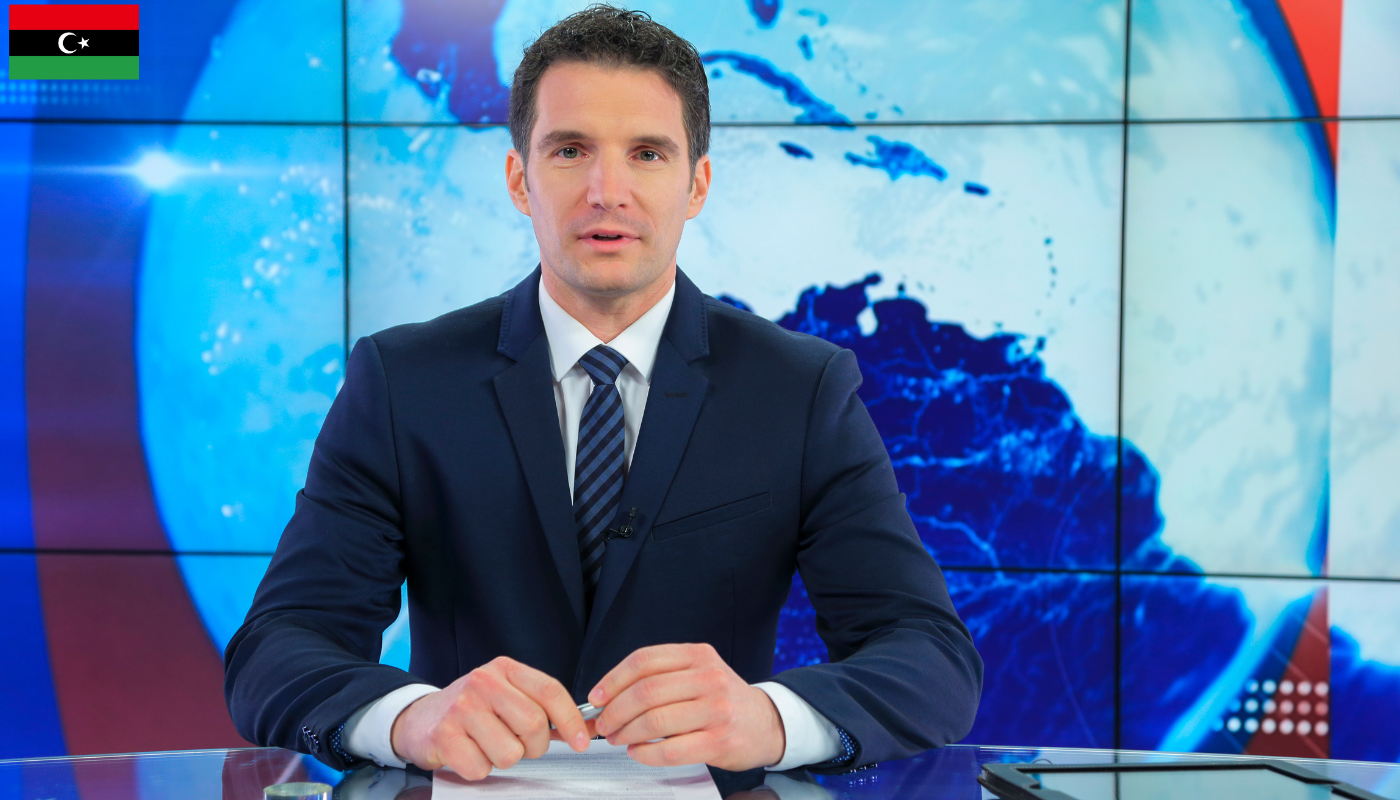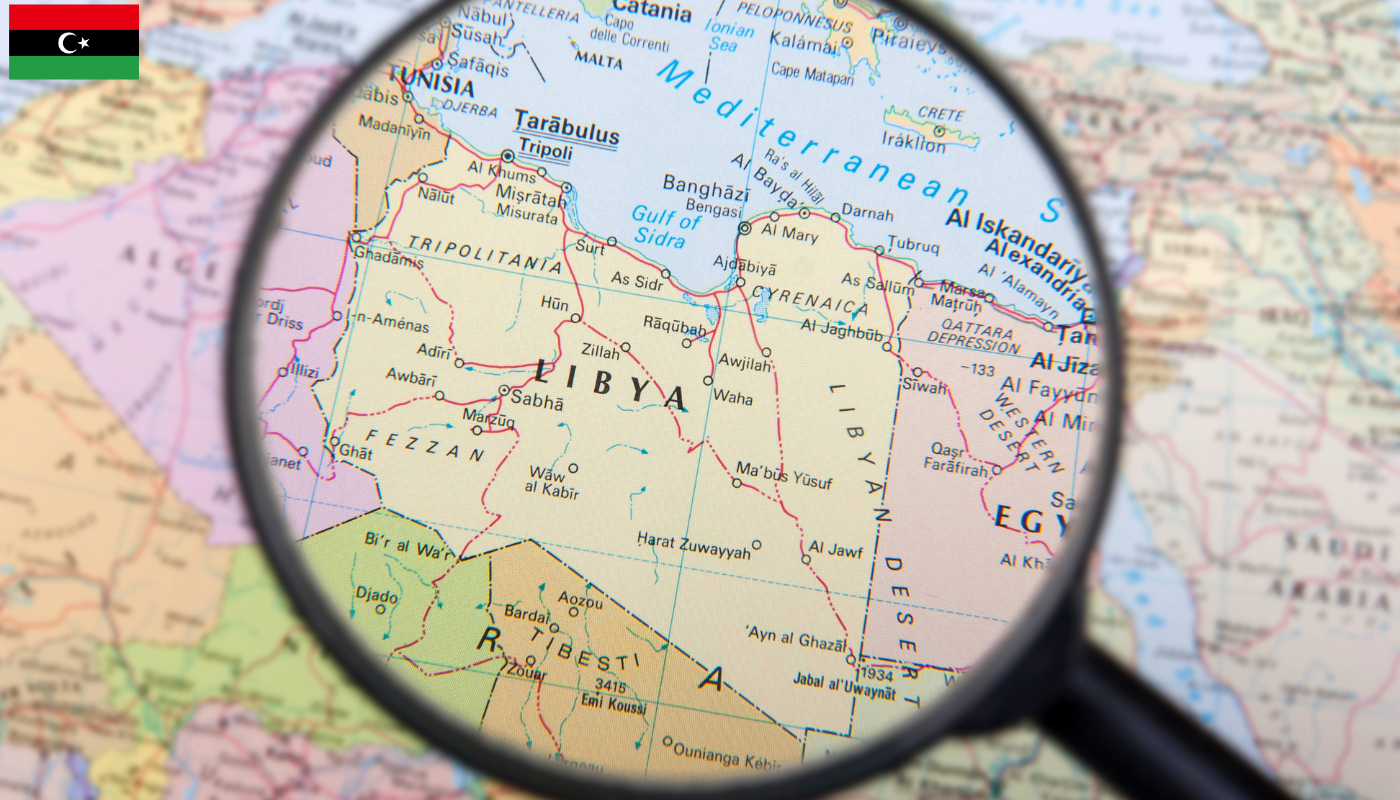Libya, a country with a tumultuous past and a complex present, continues to make headlines. From political developments and security challenges to humanitarian issues and economic prospects, the latest news from Libya encapsulates a myriad of stories shaping the nation and the region. Stay informed with our comprehensive coverage on Libya’s current state, understanding the implications of recent events and what they might mean for the future of this North African country.
Political Developments in Libya
The political landscape in Libya has undergone significant changes in recent years, marked by ongoing conflicts, international interventions, and attempts at peace negotiations. The country, rich in oil reserves, has found itself divided between two major factions since the fall of Muammar Gaddafi in 2011: the internationally recognized Government of National Accord (GNA) based in Tripoli and the Libyan National Army (LNA), led by General Khalifa Haftar, with its base of operations in the east of the country. Efforts to unite these factions have been complex and fraught with challenges.
Recent diplomatic efforts and international negotiations have aimed at stabilizing the country and paving the way for democratic elections. A major development has been the establishment of a new interim government, intended to lead Libya to elections. This political breakthrough, while fragile, offers a glimmer of hope for a country that has been mired in a decade of turmoil and conflict. However, the path to peace is still uncertain, with numerous militias and foreign actors involved in Libya’s conflict, complicating the transition process.
The United Nations continues to play a crucial role in mediating between the conflicting parties, emphasizing the importance of a Libyan-led and Libyan-owned political process. The success of these political endeavors is pivotal not only for the stability of Libya but also for the broader North African and Mediterranean regions, which have felt the repercussions of the Libyan crisis through issues like migration and security.
Deeper Insights into Libya’s Political Developments
Understanding the intricate dynamics of Libya’s political developments requires a closer look at the internal and external factors influencing its landscape. The role of international actors, including neighboring countries and global powers, has been instrumental in shaping the political dialogue in Libya. Additionally, the economic ramifications of the conflict, particularly concerning the oil industry, have had a significant impact on Libya’s path to recovery and reconciliation. The upcoming electoral process is seen as a critical step toward achieving lasting peace and stability, but the challenges ahead remain daunting.
- Formation of the new interim government
- International efforts towards peace negotiations
- The role of the United Nations in mediating the conflict
- Impact of the conflict on the oil industry
- Challenges facing the upcoming electoral process
Unveiling the Current State of Affairs in Libya
Libya, a nation rich in history and natural resources, finds itself at a crossroads. The political landscape in Libya today remains complex and multifaceted, with ongoing efforts to stabilize the country after years of civil unrest. The interim government, established with the support of the United Nations, is making strides towards unifying the nation, yet challenges persist. Economic recovery is a priority, with the oil sector being a critical component of Libya’s resurgence. However, the distribution of oil revenues continues to be a contentious issue among rival factions.
Security remains a paramount concern, as the presence of various armed groups and foreign mercenaries complicates the path to peace. Initiatives to disarm and integrate fighters into a unified national army are underway but face significant obstacles. The international community plays a pivotal role in Libya’s journey towards stability, offering both diplomatic support and humanitarian aid. Yet, foreign intervention has sometimes exacerbated divisions within the country. The Libyan populace aspires for lasting peace and prosperity, looking towards upcoming elections as a beacon of hope for a unified and democratic Libya.
Amid these challenges, there are glimmers of progress. Recent dialogues between rival factions have shown promise, leading to agreements on key issues such as electoral laws and the unification of national institutions. Such developments are crucial stepping stones towards achieving a lasting peace and rebuilding the nation. The resilience of the Libyan people, coupled with international support, fuels optimism for a future where Libya can reclaim its position as a prosperous and stable country in the region.
- The formation of an interim government aimed at unifying the country.
- Efforts to revive the economy with a focus on the oil sector.
- Challenges in distributing oil revenues among rival factions.
- Initiatives to disarm and integrate armed groups into a national army.
- Recent dialogues and agreements between rival factions on electoral laws and national unity.
Economic Reforms and Challenges in Libya
Libya’s economy, heavily reliant on its vast oil reserves, faces a critical juncture as it attempts to navigate through a labyrinth of economic reforms and challenges. The post-revolution era has seen the country’s economic stability severely impacted by political instability, security issues, and a lack of cohesive governance. Amid these challenges, Libya is striving to implement economic reforms that aim to diversify its economy, improve public services, and attract foreign investment. However, the path is fraught with obstacles, including the need to rebuild infrastructure, combat corruption, and achieve political unity.
One of the significant steps towards economic reform has been the attempt to stabilize the national currency and improve liquidity within the banking sector. This move is crucial for enabling businesses to operate smoothly and for fostering an environment conducive to investment. Additionally, efforts are being made to enhance the transparency and efficiency of the oil sector, which remains the backbone of Libya’s economy. These reforms are vital for ensuring that oil revenues can be more effectively utilized for national development and for reducing the economy’s vulnerability to fluctuations in global oil prices.
Despite these efforts, Libya faces substantial challenges. The ongoing political fragmentation has resulted in a situation where control over economic policies and resources is divided. This division complicates the implementation of national-level reforms and hampers the country’s ability to attract foreign investment. Furthermore, the security situation remains volatile, with various armed groups exerting control over different regions, thereby posing significant risks to both domestic and international business operations. The need for a unified national government and improved security cannot be overstated if Libya is to successfully implement its economic reforms and lay the foundation for sustained economic growth.
| Challenges | Current Efforts | Key Obstacles |
|---|---|---|
| Political instability | UN-backed dialogue initiatives | Fragmented governance |
| Security issues | National security reforms | Presence of armed groups |
| Economic diversification | Investment in non-oil sectors | Over-reliance on oil revenues |
| Infrastructure rebuilding | International partnerships for development | Lack of funding and expertise |
| Corruption and inefficiency | Anti-corruption measures | Entrenched practices and resistance |
In conclusion, Libya’s journey towards economic reform and stability is complex and fraught with challenges. The country’s vast oil wealth offers a beacon of hope, yet its potential remains untapped due to political and security challenges. For Libya to realize its economic aspirations, it is imperative that the ongoing efforts to stabilize the economy are accompanied by substantial progress in resolving political divisions and securing the nation. Only through a comprehensive approach that addresses both the economic and political challenges can Libya hope to achieve a prosperous and stable future.
Security Situation Updates
Libya, a country striving for stability after years of conflict, continues to face a complex security landscape. The nation’s quest for peace is often marred by sporadic clashes between rival factions, underscoring the fragile nature of its post-revolution recovery. Recent months have seen efforts to unify the country’s military forces, an essential step towards lasting peace. However, the political landscape remains divided, with two major administrations vying for legitimacy and control, further complicating the security dynamics.
One significant concern is the presence of various armed groups and militias, some of which have international affiliations. These entities often exercise control over territories, including key urban areas and resource-rich regions, challenging the central government’s authority. Efforts by the United Nations and other international bodies to mediate and bring about a peaceful resolution have seen varying degrees of success.
Moreover, the security situation is exacerbated by external influences, with foreign powers sometimes offering support to different factions. This international dimension adds a layer of complexity to the already tangled scenario, making the path to reconciliation and unity more arduous. Despite these challenges, there are ongoing dialogues and peace initiatives aiming to bridge divides and establish a unified, stable governance framework for Libya.
| Aspect | Current Status | Impact |
|---|---|---|
| Political Division | Two rival administrations | High |
| Militia Presence | Widespread across the country | Significant |
| International Mediation | Ongoing efforts | Variable |
| External Influence | Foreign support to factions | Notable |
| Security Initiatives | Efforts to unify military forces | Critical |
Humanitarian Crisis and Aid
In recent years, Libya has faced a complex and multifaceted humanitarian crisis, deeply rooted in political instability, armed conflict, and economic turmoil. The ongoing strife has severely impacted the civilian population, leading to a significant need for humanitarian aid and support. The situation is exacerbated by the displacement of thousands of people within the country, as well as the influx of migrants and refugees using Libya as a transit point on their perilous journey towards Europe.
The international community, through various NGOs and UN agencies, has been actively involved in providing essential services such as food, water, shelter, and medical care. However, the scale of the crisis continues to outstrip the resources available, leaving many in dire need. The spread of COVID-19 has further complicated the scenario, straining the already fragile healthcare system and adding another layer of urgency to the humanitarian response efforts. Despite the challenges, aid workers are committed to reaching the most vulnerable populations, often at great personal risk, to deliver lifesaving assistance.
Challenges in Delivering Humanitarian Aid
Delivering humanitarian aid in Libya is fraught with challenges, including security risks, bureaucratic hurdles, and logistical difficulties. Access to affected areas is often hindered by ongoing hostilities, with aid workers and convoys regularly facing threats. Moreover, the political landscape complicates the coordination of aid distribution, requiring careful navigation to ensure that help reaches those who need it most without being co-opted by conflicting parties.
| Issue | Impact | Response |
|---|---|---|
| Political instability | Disrupts governance and aid delivery | International mediation and support |
| Armed conflict | Endangers civilians and displaces communities | Humanitarian ceasefires and protection measures |
| Economic turmoil | Limits access to basic services | Emergency relief and economic support |
| COVID-19 pandemic | Overburdens healthcare systems | Health interventions and vaccine distribution |
| Displacement | Increases vulnerability of populations | Shelter, food, and essential services provision |
Oil Production and Exports
Libya’s economy has long been buoyed by its significant oil reserves, making it a pivotal player in the global energy market. Recent developments have seen an uptick in oil production and exports, signaling a potential shift in the country’s economic landscape and its role in international energy dynamics. The North African nation possesses the largest oil reserves in Africa, and the oil sector constitutes the backbone of its economy, funding a large portion of the national budget and foreign exchange earnings.
Despite political instability and security challenges that have plagued Libya since the 2011 revolution, the oil industry has shown remarkable resilience. Efforts to increase oil production have been successful, with several fields resuming operations and new ones being developed. This resurgence is crucial for Libya’s economy, as it seeks to recover from years of conflict and upheaval. Moreover, the global demand for oil, coupled with fluctuating prices, places Libya in a strategic position to boost its exports and secure more substantial revenues.
Notably, the National Oil Corporation (NOC) has been instrumental in navigating through the complexities of the market and the internal difficulties. It has managed to forge agreements and partnerships that have facilitated the reopening of export terminals and the gradual increase in production levels. However, the sustainability of these gains is contingent upon the stabilization of the country’s political landscape and the establishment of a unified government that can implement coherent energy policies.
Strategic Developments in Libya’s Oil Sector
Recent strategic developments have underscored Libya’s commitment to enhancing its oil production capabilities and expanding its export potential. The government and the NOC have embarked on ambitious projects aimed at modernizing infrastructure, improving security measures at oil facilities, and investing in technology to increase efficiency. These efforts are designed to not only boost output but also attract foreign investment, which is critical for the sector’s growth and for advancing exploration activities.
Furthermore, Libya is actively seeking to diversify its energy portfolio by exploring renewable energy sources. This initiative reflects a growing awareness of the global shift towards sustainable energy and the need to adapt to changing market demands. By integrating renewable energy projects, Libya aims to ensure long-term energy security, reduce dependency on fossil fuels, and contribute to global environmental efforts.
| Year | Oil Production (Barrels per Day) | Oil Exports (Barrels per Day) |
|---|---|---|
| 2018 | 1,000,000 | 800,000 |
| 2019 | 1,100,000 | 900,000 |
| 2020 | 500,000 | 300,000 |
| 2021 | 1,200,000 | 1,000,000 |
| 2022 | 1,300,000 | 1,100,000 |
As Libya continues to navigate the complexities of its political landscape, the oil sector remains a beacon of potential and prosperity. With strategic investments and a focus on stability and growth, the country is poised to enhance its standing in the global oil market, benefiting both its economy and the international community.
International Relations Impact
The dynamics of international relations have a profound effect on Libya’s current state, particularly in the wake of its ongoing political turmoil. The involvement of foreign powers, each with their own interests in Libya’s future, has both exacerbated and mitigated the country’s internal conflicts. On one hand, the support from various nations has emboldened certain factions within Libya, leading to a prolonged stalemate. On the other, international diplomatic efforts, including those by the United Nations, aim to stabilize the region and foster a peaceful resolution to the conflict.
Importantly, Libya’s vast oil reserves make it a significant player on the global stage, affecting energy markets and economic policies in countries far beyond its borders. The uncertainty surrounding Libya’s political situation thus has ripple effects on global oil prices and energy security. Additionally, Libya’s geographical position along the Mediterranean Sea makes it a key point in migration routes to Europe, further complicating its international relations as European countries grapple with migration policies and border control.
The international community’s role in Libya is not just limited to diplomatic and economic interests; it also encompasses humanitarian efforts to address the repercussions of conflict on the Libyan populace. Organizations and countries alike strive to provide aid, even as the situation remains fluid and unpredictable. The outcome of Libya’s internal strife, therefore, is not solely a matter of national concern but a significant issue for global stability and prosperity.
Further Context on International Relations Impact
Delving deeper into the impact of international relations on Libya, it becomes evident that the country’s future is heavily influenced by external factors. The intricate web of alliances and enmities has made the Libyan crisis a focal point for a broader geopolitical struggle. The involvement of regional powers like Egypt and Turkey, alongside international actors such as Russia and the United States, underscores the strategic importance of Libya and its potential to shift regional balances of power.
A Broader Perspective on Libya’s Geopolitical Significance
This broader perspective highlights the complex interplay between local factions and international stakeholders, each vying for influence in a post-Gaddafi Libya. As negotiations and conflicts continue, the international community’s approach to Libya serves as a litmus test for the efficacy of foreign intervention in sovereign affairs. The resolution of Libya’s crisis, therefore, may offer valuable lessons for international diplomacy and conflict resolution strategies in similarly complex situations around the world.
- The role of the United Nations in mediating Libya’s conflict.
- Impact of foreign military support on internal Libyan dynamics.
- Economic implications of Libya’s instability on global oil markets.
- The humanitarian crisis and international aid responses.
- Migration patterns influenced by Libya’s geopolitical situation.
In conclusion, Libya’s situation is a multifaceted issue that sits at the intersection of local conflicts and global geopolitics. The international community’s engagement, while aimed at stabilizing the region, reflects the broader challenges of managing complex crises in a connected world. As Libya strives for peace and stability, the support and interference from external entities will continue to play a critical role in shaping its destiny and, by extension, the geopolitical landscape of the region.






